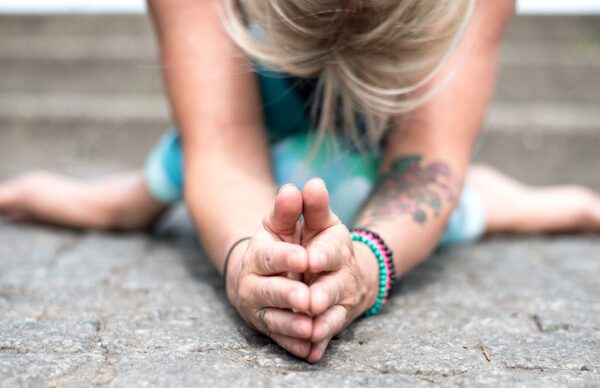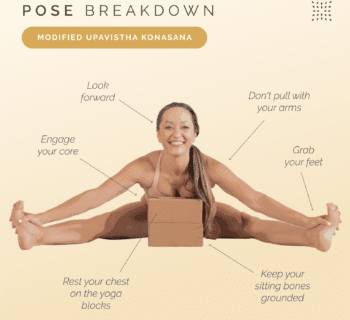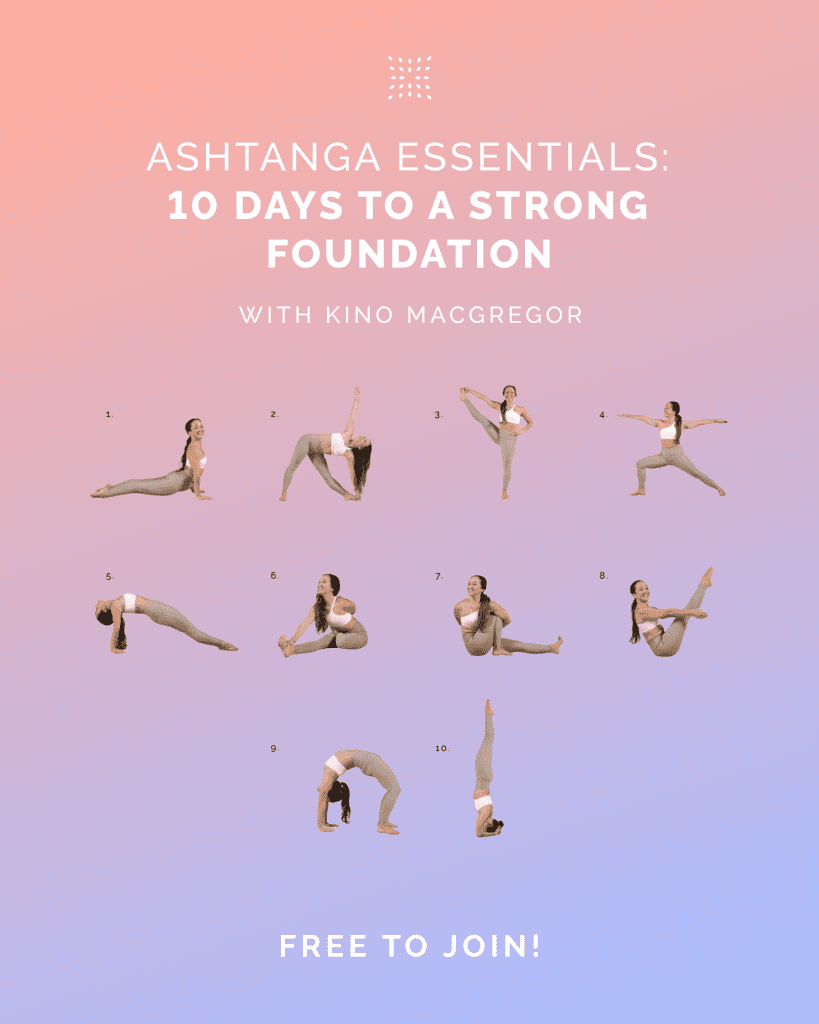Few practices in the world of yoga bring with them such mystique, discipline, and passionate followers as Ashtanga Yoga. Whether viewed from the perspective of its ancient lineage or its transformative impact on body and mind, this path demands both respect and inquiry. Ashtanga does not simply offer a workout; it is a philosophy, a science, and a way of life that continues to shape yoga communities around the globe.
Table of Contents
The Ancient Roots of Ashtanga Yoga
Key Methodologies and Structure of Ashtanga Yoga
The Importance of Breath and Bandhas in Ashtanga Yoga
Tradition Meets Contemporary Practice: The Living Evolution of Ashtanga Yoga
Daily Life and Philosophy: Living the Ashtanga Path Beyond the Mat
Ashtanga Yoga Today: A Living Tradition in a Global Era
Practical Guidance for New and Experienced Ashtanga Practitioners
Frequently Asked Questions (FAQ)
The Ancient Roots of Ashtanga Yoga
Stepping onto an Ashtanga mat today is more than just a physical practice—it’s a journey into a rich tapestry of tradition and wisdom that stretches back thousands of years. The term Ashtanga, derived from the Sanskrit words ashta (eight) and anga (limb), refers to the “eight-limbed path” outlined in the foundational yogic text, the Yoga Sutras of Patanjali, compiled around 200 BCE.
Patanjali’s Yoga Sutras serve as a philosophical guidebook for the spiritual seeker, offering a systematic path to liberation. This path is composed of:
- Yama – Ethical restraints or moral disciplines (such as non-violence and truthfulness)
- Niyama – Personal observances (like cleanliness, contentment, and self-discipline)
- Asana – The physical postures, originally designed to prepare the body for meditation
- Pranayama – Control of the breath to influence life force energy
- Pratyahara – Withdrawal of the senses, turning attention inward
- Dharana – Concentrated focus on a single point
- Dhyana – Uninterrupted meditation
- Samadhi – A transcendent state of bliss, unity, or spiritual absorption
While this eightfold framework forms the philosophical backbone of Ashtanga, the dynamic, physically demanding style we associate with Ashtanga Yoga today, often incorporating elements of vinyasa flow, is a modern embodiment of these ancient principles.
The Transmission of Ashtanga
The bridge between ancient philosophy and contemporary practice was built in the early 20th century by one of the most influential figures in modern yoga: Sri T. Krishnamacharya. Often referred to as the father of modern yoga, Krishnamacharya was a scholar, healer, and yogi who sought to preserve and revitalize yoga’s ancient wisdom for a new era. Drawing from deep study and cultural exchanges between India and regions like Indonesia, he crafted a teaching style that combined physical rigor with spiritual intention.
Among Krishnamacharya’s many students, K. Pattabhi Jois emerged as the principal custodian of what would become Ashtanga Vinyasa Yoga. Jois began studying with Krishnamacharya as a young boy and later developed his own interpretation of the eight-limbed path through a physically structured, breath-synchronized practice. In the 1940s, he began teaching this method in Mysore, India, gradually shaping it into the system recognized and practiced around the world today.
The sequences Jois taught—now famously known as the Primary, Intermediate, and Advanced Series—were designed not only to build strength and flexibility but also to guide the practitioner inward through practices like sun salutations, breath (pranayama), focus (dharana), and flow (dhyana). The combination of movement, breath, and internal awareness became a potent vehicle for personal transformation.
The Living Tradition
What sets Ashtanga apart is its method of transmission. Rather than relying solely on written texts, the tradition has long emphasized direct, personal instruction—passed from teacher to student, breath by breath, pose by pose. This oral lineage, combined with the discipline of daily practice, fosters deep internalization of the teachings over time.
Students of Pattabhi Jois recall a teacher who was both strict and deeply devoted, often adjusting students by hand and urging them to find balance between effort and surrender. His grandson, Sharath Jois, has continued this legacy as the most recent lineage holder, inspiring practitioners around the world.
It’s through these relationships—between master and student, body and breath, tradition and evolution—that Ashtanga Yoga continues to thrive as a living, breathing practice. Today, Ashtanga Yoga exists at the intersection of history and modernity. It honors the spiritual essence of the eight limbs while offering a physically challenging, methodical path that invites discipline, humility, and self-discovery. As students unroll their mats and begin their sequences, they are not just practicing postures—they are stepping into a lineage that spans millennia.
Key Methodologies and Structure of Ashtanga Yoga
When most practitioners refer to “Ashtanga Yoga,” they’re speaking about Ashtanga Vinyasa Yoga—a dynamic and disciplined system that synchronizes movement and breath within a set sequence of postures. This methodology, originally codified and taught by K. Pattabhi Jois, serves as both a physical practice and a spiritual path, intended to purify the body, calm the mind, and cultivate internal awareness through consistent effort over time.
At its core, Ashtanga Yoga is a moving meditation, built on the principle of vinyasa krama—a methodical progression that links breath (pranayama) with movement (asana) to develop a deep, internal rhythm. The structure of the practice is highly intentional, designed not only to increase strength and flexibility, but to unlock energetic channels, promote mental clarity, and gradually lead practitioners toward deeper states of concentration and meditation.
The Six Series: A Progressive Journey
The hallmark of Ashtanga Yoga’s methodology lies in its structured and hierarchical set of six series of postures. Each sequence builds upon the last, preparing the body and nervous system for the increasing physical and energetic demands of the next stage.
| Series Name | Sanskrit Title | Primary Focus and Purpose |
| Primary Series | Yoga Chikitsa (Yoga Therapy) | Establishes foundational strength, alignment, and detoxification of the body; focuses on forward folds and hip opening |
| Intermediate Series | Nadi Shodhana (Nerve Cleansing) | Works on purifying the nervous system; emphasizes backbends, twists, and energetic balance |
| Advanced Series A–D | Sthira Bhaga (Strength and Grace) | Demands high levels of strength, control, and flexibility; explores deep arm balances, binds, and inversions with an emphasis on grace and mental focus |
Download a Free PDF Guide to the First and Second Series!
Progression through these series is neither rushed nor automatic. Most practitioners spend years—often decades—within the Primary and Intermediate Series, refining alignment, developing strength, and integrating breath and focus. Advancement to the next series is traditionally not self-determined but offered by a qualified teacher based on consistent daily practice, physical readiness, and mental steadiness.
The Tristhana: The Three Pillars of Practice
Ashtanga Yoga is more than a sequence of asanas—it is a comprehensive method of internal purification, built upon three focal points known collectively as Tristhana:
- Asana (Posture) – The physical postures serve as the foundation for cultivating strength, balance, and flexibility. Each pose is linked by a transitional vinyasa movement, keeping the body in continuous motion.
- Pranayama (Breath Control) – Specifically, ujjayi pranayama, a controlled and audible breath technique, anchors the practitioner in the present and fuels the internal heat that detoxifies the body.
- Drishti (Gaze Point) – Each pose has a specific point of focus, training the mind to concentrate and remain steady, reducing distraction and encouraging a meditative state.
By consistently aligning these three elements, students develop a focused and embodied awareness, using the rhythm of the breath and the stillness of gaze as anchors during even the most challenging moments of practice.
Mysore Style and Led Classes: Two Modes of Learning
A distinctive feature of the Ashtanga system is its dual approach to instruction, offering both Mysore-style practice and led classes—each with its own benefits and role in a student’s journey.
- Mysore Style: This is the traditional format in which Ashtanga Yoga was taught in Mysore, India. In a Mysore room, students practice the sequence at their own pace, following the series they have been taught, while the teacher moves around the room offering individualized adjustments, verbal cues, and encouragement. This self-paced model builds independence, discipline, and a deep internal relationship with the practice.
- Led Classes: In contrast, led classes involve the teacher calling out the postures and breath counts, guiding all students through the same sequence in unison. These classes are typically conducted for the Primary Series and serve as an opportunity to refine pacing, correct rhythm, and ensure alignment with the traditional vinyasa count.
Practice the Opening and Closing Mantras with Kino:
Most traditional Ashtanga shalas offer both formats, encouraging students to balance autonomy with structure, and to cultivate both the self-reliance of Mysore practice and the cohesion and accountability of led instruction.
A Method Rooted in Discipline and Devotion
At its essence, Ashtanga Yoga is a daily discipline, a spiritual practice cloaked in physical form. The structure, rigor, and repetition are not limitations but gateways—inviting practitioners to move beyond the surface of the body and into the deeper layers of breath, focus, and awareness. Whether one remains in the Primary Series for years or explores the more advanced postures, the heart of the method remains the same: a steady, humble, and embodied pursuit of inner transformation.
The Importance of Breath and Bandhas in Ashtanga Yoga
At the heart of Ashtanga Yoga lies a powerful internal technology that transforms the physical practice into a meditative and energetic discipline: the synchronization of breath and bandhas (energetic locks). These two elements are not merely supportive tools—they are foundational pillars that guide, refine, and elevate every movement on the mat.
Ujjayi Breath: The Rhythmic Pulse of Practice
In Ashtanga Yoga, the breath is far more than a means of oxygenation. It becomes a metronome, a steady and conscious rhythm that governs the entire flow of practice. This specific breathing technique—known as Ujjayi Pranayama—is characterized by a gentle constriction at the back of the throat, producing a soft, oceanic sound that anchors the mind and body.
Key qualities of Ujjayi breath:
- Audible and steady: The sound acts as a feedback loop, guiding awareness and focus.
- Even inhalation and exhalation: Breath is matched to movement, ensuring smooth, controlled transitions.
- Internal heat generation: The breath builds tapas, or inner heat, which is believed to aid in detoxification by purifying the muscles, organs, and subtle energy channels.
When practiced with precision, Ujjayi breathing links every posture (asana) and transition (vinyasa), weaving them into a seamless, flowing sequence. It helps practitioners maintain rhythm, cultivate endurance, and enter a state of moving meditation, even amid physical challenges.
Bandhas: The Subtle Locks of Power and Stability
While the breath sets the rhythm, the bandhas—or energetic locks—create the structure and containment within that rhythm. Bandhas are subtle engagements of specific muscle groups that, when activated, redirect the flow of energy (prana) within the body, stabilize the physical frame, and support the spine and core during both static and dynamic movement.
The three principal bandhas in Ashtanga Yoga are:
- Mula Bandha (Root Lock)
- Location: The pelvic floor, near the perineum
- Activation: A gentle lifting and engagement of the pelvic muscles
- Purpose: Grounds and contains energy, promotes upward flow, and provides stability in seated and standing postures
- Uddiyana Bandha (Upward Abdominal Lock)
- Location: Lower abdomen, just below the navel
- Activation: A firm drawing inward and slightly upward of the lower belly
- Purpose: Supports the spine, protects the lower back, and helps generate internal lift and lightness in poses and transitions
- (Jalandhara Bandha, the throat lock, is rarely emphasized in the physical asana portion but becomes relevant in advanced pranayama practice.)
Together, Mula Bandha and Uddiyana Bandha form the core energetic engine of Ashtanga practice. They are not merely muscular contractions, but deeply internal actions that cultivate a sense of containment, lightness, and internal awareness. Activating the bandhas creates a buoyant lift from within, often making challenging poses more accessible by distributing effort efficiently throughout the body.
More on the Bandhas with Kino:
Breath + Bandha = Energetic Integration
When Ujjayi breath and the bandhas are practiced together, they generate a dynamic yet contained current of energy that moves upward through the spine, supporting a strong, stable, and fluid practice. This union of breath and energetic lock becomes the practitioner’s internal compass, especially in moments of intensity or complexity.
In this way, Ashtanga Yoga shifts from being a series of external shapes to a profound internal process of transformation. Practitioners begin to feel that the real strength of the practice doesn’t come from muscle alone, but from the deep integration of breath, bandhas, and awareness.
Over time, this integration has ripple effects beyond the mat—cultivating mental clarity, emotional steadiness, and a heightened sense of presence. In the language of yoga, it’s the cultivation of pratyahara (withdrawal of the senses), dharana (concentration), and eventually, dhyana (meditative absorption).
The breath and bandhas are not accessories to the Ashtanga method—they are essential technologies for stability, energy control, and mindfulness. Together, they form the energetic backbone of the practice, allowing each practitioner to move not just with precision, but with intention, grace, and inner power.
Tradition Meets Contemporary Practice: The Living Evolution of Ashtanga Yoga
In the latter half of the 20th century, a quiet revolution began to unfold in the South Indian city of Mysore. As word spread about a powerful and transformative method of yoga being taught by Sri K. Pattabhi Jois, Western students began traveling—often halfway around the world—to study at his modest shala. What began as a trickle of curious seekers soon became a global movement. These early students would carry the flame of Ashtanga Yoga back to their home countries, sparking a cultural and spiritual renaissance that changed the face of modern yoga.
The Global Spread: Ashtanga Takes Root Worldwide
From Mysore to Manhattan, from the narrow streets of Old Mysore to high-rise studios in cities like New York, London, Tokyo, and Sydney, the Ashtanga method quickly found its way into the hearts and homes of dedicated practitioners. Yoga shalas opened in urban centers across the globe, often designed to mirror the discipline and structure of the Mysore shala itself—early morning practices, daily repetition, and a firm adherence to the traditional sequences.
What attracted many wasn’t just the physical intensity—it was the ritual, discipline, and deep internal reward of the practice. Ashtanga offered a clear path: progress was measured not by external validation, but through consistent effort and intimate self-knowledge. The predictability of the sequences became a liberating structure, allowing practitioners to measure their growth not in novelty, but in subtlety—deeper breath, steadier focus, quieter mind.
Communities grew not just from shared movement, but from shared values. Students and teachers alike built relationships steeped in mutual respect, lineage, and the common understanding that transformation lies on the other side of struggle.
The Crossroads: Tradition in Conversation with Contemporary Science
In recent years, however, Ashtanga Yoga has found itself in dialogue with the rapidly expanding field of movement science, biomechanics, and trauma-informed care. As the practice reaches broader audiences, questions have naturally emerged:
- Is the traditional sequencing universally appropriate?
- How do we protect students from repetitive strain or injury?
- Can a method rooted in structure evolve to meet modern needs while remaining authentic?
Teachers, both seasoned and emerging, have begun to examine these questions with honesty and nuance. Some have revised how they teach certain poses, others have introduced modifications to make the sequences more accessible to a wider range of students—including older practitioners, those with injuries, and individuals with different body types or neurodivergent experiences.
This process is not one of dilution, but refinement and deep listening. Rather than abandoning the Ashtanga system, many contemporary teachers are choosing to inhabit it more mindfully, honoring the lineage while making space for compassionate adaptation.
Innovation Within Tradition: A New Era of Ashtanga Practice
Today, the Ashtanga Yoga community stands as a living tradition—one that breathes, questions, adapts, and continues to grow. Some of the most promising developments include:
- Accessibility & Inclusion: There is a growing effort to tailor the practice for all ages, abilities, and body types, challenging the once-dominant narrative that Ashtanga is only for the young, athletic, or flexible.
- Trauma-Informed Teaching: Teachers are integrating consent-based adjustments, clearer boundaries, and somatic awareness into their classrooms—creating safer, more empowering environments for students.
- Reexamining Sequencing: While many still hold fast to the original series, others are experimenting with progression models, adjusting when and how students move from one posture or series to the next based on individual readiness rather than rigid benchmarks.
- Dialogue Over Dogma: Conversations are opening up across cultures, generations, and platforms. Podcasts, books, online communities, and teacher trainings now include critical reflection alongside devotion, allowing the tradition to be both honored and questioned.
A Practice Rooted in Time, Evolving with Care
Ashtanga Yoga continues to be a source of deep transformation for thousands around the world. Its power lies not only in its structure and intensity, but in its capacity to evolve. The essence of the practice—discipline, breath, internal awareness, and humility—remains unchanged, even as its outward expression becomes more nuanced and inclusive.
In this moment of reflection and renewal, Ashtanga is being carried forward not just by the memory of its founder, but by the living, breathing commitment of students and teachers who believe in the practice—and are willing to let it grow.
Daily Life and Philosophy: Living the Ashtanga Path Beyond the Mat
For sincere practitioners of Ashtanga Yoga, the practice doesn’t end with the final namaste or the last posture of the sequence—it permeates every aspect of daily life. While the physical sequences may be the most visible expression of the system, the true power of Ashtanga lies in its ability to shape the way one thinks, acts, and responds to the world. Over time, the practice evolves into a lifestyle rooted in awareness, discipline, and inner alignment.
At the heart of this transformation are the Yamas and Niyamas—the ethical and personal observances outlined in the Yoga Sutras of Patanjali. These principles serve as the moral compass for yogic living, and in Ashtanga, they are not theoretical ideals but practical tools for daily decision-making and self-reflection.
The Yamas and Niyamas: Guiding Principles for Conscious Living
Practitioners are encouraged to engage with these foundational teachings not just intellectually, but experientially—allowing them to shape interactions, relationships, and internal dialogue. Among these principles are:
- Satya (Truthfulness): Encouraging honesty in communication and authenticity in action
- Ahimsa (Non-violence): Cultivating compassion toward oneself and others
- Santosha (Contentment): Learning to accept life as it is, without constant striving or comparison
- Svadhyaya (Self-study): Deepening self-awareness through introspection and study of sacred texts
- Tapas (Discipline): Embracing effort and inner fire as necessary ingredients for growth
Over time, these tenets begin to infuse daily routines, work life, relationships, and even thought patterns. Ashtanga becomes less about achieving physical goals and more about how one shows up to life—with honesty, patience, and presence.
The Transformative Power of Daily Practice
One of the most defining features of Ashtanga Yoga is its commitment to daily practice, traditionally performed at sunrise, six days a week. Whether a student completes a full series or a modified sequence, the power lies in showing up consistently. This repetition—far from being monotonous—creates a stable container in which transformation can unfold.
Many practitioners report that the rhythm and structure of daily practice lead to:
- Clarity of mind – As the body moves and the breath deepens, mental clutter begins to clear, revealing a more spacious and focused awareness.
- Emotional resilience – The discipline of the mat translates into greater equanimity off the mat, particularly in facing stress, conflict, or uncertainty.
- Patience and perseverance – Progress in Ashtanga is slow and earned. Practitioners learn to trust the process, developing a long-term mindset that values sustainability over speed.
- Courage and self-honesty – The repetition of postures reveals physical and psychological patterns. Facing these moments day after day cultivates the bravery to confront discomfort, ego, and vulnerability.
A Lifelong Commitment to Inner Growth
What begins as a desire to become stronger, more flexible, or more focused often opens into uncharted inner territory. Over time, practitioners report profound changes not just in their bodies, but in their perspectives, habits, and emotional landscapes. The daily repetition of the same sequence, each vinyasa flow, becomes a mirror, reflecting back layers of the self that might otherwise remain hidden. Each breath, each vinyasa, becomes a ritual of self-inquiry.
This is why Ashtanga is often referred to as a lifelong practice. It’s not about mastering every advanced posture or completing all six series. Instead, it’s about building a relationship with the self through consistency, humility, and devotion. As practitioners age, the practice adapts—it softens, deepens, and continues to serve as a container for introspection, healing, and spiritual development.
From Discipline to Devotion
In the end, Ashtanga Yoga is not just a physical discipline—it is a living philosophy. Through the consistent application of its teachings, both on and off the mat, practitioners develop a deeper understanding of themselves and their place in the world. Breath by breath, posture by posture, day by day, Ashtanga becomes more than a practice—it becomes a path.
Ashtanga Yoga Today: A Living Tradition in a Global Era
Ashtanga Yoga in the 21st century is both a global movement and a deeply personal path. Rooted in tradition yet continually evolving, the practice has found its way into homes, studios, retreat centers, and digital spaces around the world. Today’s students enter a rich and diverse Ashtanga landscape—one that offers unprecedented access to teachings while still honoring the lineage and values that define the method.
With a click or swipe, practitioners can now access digital Mysore rooms, participate in interactive workshops, consult online mentors, and engage with a growing body of scholarly podcasts, translations, and critical essays that help unpack the subtle layers of philosophy and practice. These resources provide clarity and support for students in all phases of their journey—whether they’re beginning the Primary Series or refining Advanced poses.
What Remains Steadfast: Anchors of the Practice
Even as the world around it changes, certain core principles of Ashtanga Yoga remain deeply rooted and unchanged:
- Abhyasa (Consistent Effort Over Time): At the heart of the method is the value of steady, sustained practice. Ashtanga teaches that true transformation happens not in intensity but in persistence—through the daily return to breath, posture, and presence.
- The Teacher-Student Relationship: Though online platforms have broadened access, the importance of learning through direct transmission—ideally in a Mysore-style setting—continues to be emphasized. The relationship between teacher and student is built on trust, observation, and individualized guidance.
- Respect for Tradition with Room for Evolution: Ashtanga holds reverence for its lineage while also acknowledging that no system is immune to growth. Today’s practitioners and teachers are increasingly invited to reflect critically, ensuring the tradition remains responsive to the diverse realities of modern life, bodies, and identities.
Iconic Teachers and Lineages: Carrying the Torch Forward
Ashtanga’s spread and survival through the decades can be credited to a wide array of passionate teachers, each of whom has contributed uniquely to the method’s development and global accessibility.
| Teacher | Contribution |
| K. Pattabhi Jois | Codified and taught the Ashtanga method as we know it today; founder of the Ashtanga Yoga Research Institute in Mysore. |
| Sharath Jois | Grandson of Pattabhi Jois and the most recent lineage holder, he traveled the world to teach and preserve the traditional format. |
| Saraswathi | Daughter of Pattabhi Jois and a pioneering teacher, known for making traditional Ashtanga accessible to students of all backgrounds. |
| Manju Jois | Son of Pattabhi Jois and a leading force in sharing traditional Ashtanga worldwide, with a focus on its healing and spiritual roots. |
| David Swenson | One of the first Americans to study with Jois; known for his clear, humorous, and widely accessible teaching style. |
| Kino MacGregor | A global figure in online yoga education; her social media presence has helped demystify the practice and foster worldwide community dialogue. |
| BNS Iyengar | A respected senior teacher in the Ashtanga tradition; known for his deep mastery of the practice and his significant role in preserving and transmitting Ashtanga Yoga, particularly in the Mysore region. |
| Richard Freeman & Mary Taylor | Revered for their philosophical depth and nuanced approach to alignment and breathwork. |
| Tim Miller | Helped establish Ashtanga Yoga in the U.S. through decades of dedicated practice and instruction. |
| Hamish Hendry | Central figure in bringing traditional Ashtanga Yoga to the UK; known for his consistent daily teaching and devotion to the method. |
| Vijay Kumar | Known for his detailed teaching of the method, emphasis on breath and alignment, and dedication to preserving the tradition. |
These and many others have helped shape Ashtanga into a pluralistic and accessible tradition, while still maintaining fidelity to its roots.
The Role of Community: A Shared Journey
Whether in local shalas, expansive retreat settings, or virtual Mysore rooms, the Ashtanga community remains a pillar of support and inspiration, bringing practitioners together to explore asanas and deepen their understanding of the practice. Around the world, countless in-home Ashtanga shalas also serve as intimate, community-rooted spaces where the tradition is lovingly shared. These settings—both physical and digital—offer more than just instruction; they provide the encouragement, accountability, and camaraderie essential for long-term practice.
Seasonal intensives, teacher trainings, and global conferences foster a sense of belonging and keep the practice alive with fresh insights and collective energy. For many, the Ashtanga path is made more meaningful through the shared rhythm of rising early, breathing deeply, and moving together—even from different corners of the world.
Dispelling Myths and Misconceptions
Despite its growing popularity, Ashtanga is often misunderstood by those unfamiliar with its depth and adaptability. Common myths include:
- “Ashtanga is only for the young, athletic, or hyper-flexible.” In truth, the method offers modifications and progressions for all bodies and ages. The emphasis is not on achieving extreme shapes but on maintaining consistency and internal awareness.
- “It’s too rigid or dogmatic.” While the structure is fixed, the experience is anything but. Within the repetition lies a space for inquiry, reflection, and evolution. Teachers increasingly prioritize individual needs, injury prevention, and mental health.
- “The sequences are one-size-fits-all.” In reality, they serve as a canvas—one upon which each practitioner paints a unique journey. Adjustments, pacing, and depth are all tailored to meet the student where they are.
A Tradition That Lives and Breathes
Ashtanga Yoga today is no longer confined to a single culture, language, or demographic—it is a global, adaptive, and resilient practice. With reverence for its roots and openness to contemporary needs, it continues to thrive as both a discipline and a doorway—leading students not just into postures, but into deeper versions of themselves.
Whether practiced in a small home studio, a bustling city shala, or online with guidance from halfway across the world, Ashtanga remains what it has always been at its core: a tool for self-transformation, devotion, and discovery.
Practical Guidance for New and Experienced Ashtanga Practitioners
Whether you’re stepping onto the mat for the first time or returning after years of practice, the Ashtanga Yoga method offers a pathway rich with challenge, depth, and discovery. Yet, navigating its intensity and tradition requires more than willpower—it requires patience, intention, and a mindset of inquiry. Below is a guide to help orient practitioners of all levels, offering grounded wisdom that supports sustainable and meaningful engagement with this profound system.
1. Start Slow, Build Steadily
The full Primary Series (Yoga Chikitsa) can take 90 minutes or more and includes over 50 asanas linked in a flowing vinyasa flow progression. While this may seem daunting, the tradition recognizes that every journey begins with a single step. Most newcomers are introduced to the practice a few postures at a time, focusing on breath, alignment, and ease before adding complexity.
Tip: Quality over quantity. It’s better to practice a few postures with awareness than to rush through the full sequence. Allow the body to adapt, and let the structure unfold at a natural pace.
2. Seek Experienced Guidance
Ashtanga Yoga was designed to be transmitted directly from teacher to student. While books and online resources are helpful, nothing compares to working with a knowledgeable teacher who can:
- Offer hands-on adjustments or verbal cues tailored to your unique anatomy
- Watch for subtle misalignments that could lead to long-term strain
- Provide insight into the philosophical framework of the practice
- Act as a steadying presence through moments of doubt, frustration, or stagnation
Tip: When possible, attend a Mysore-style class, where you’ll receive one-on-one attention within a shared group setting. If learning online, look for teachers who offer live sessions, personalized feedback, and a trauma-aware approach.
3. Honor Your Limits, Embrace Adaptability
Though Ashtanga is a structured system, it is not rigid. One of its quiet lessons is learning to listen to your body—to recognize when to push forward and when to pull back. Injury, fatigue, aging, or life circumstances may all shape how the practice shows up on a given day.
Tip: Use modifications, props, or shortened practices when needed. Skipping poses or resting is not a sign of failure—it’s a reflection of discernment and maturity in practice.
4. Integrate the Practice Off the Mat
The real gift of Ashtanga Yoga begins to reveal itself not just through stronger hamstrings or deeper backbends, but through a more conscious way of living. The Yamas and Niyamas, Patanjali’s ethical observances, offer a practical guide for engaging with the world from a place of clarity and compassion.
- Satya (truthfulness): Speak and act with honesty
- Ahimsa (non-harm): Be kind to yourself and others
- Tapas (discipline): Show up even when it’s difficult
- Santosha (contentment): Find ease in the present moment
Tip: Take a few minutes each day to reflect on how your practice influences your relationships, habits, and mindset. The transformation that begins on the mat often echoes into every aspect of life.
5. Keep a Practice Journal
A regular journaling practice—whether detailed or minimalist—can offer a powerful lens into your inner evolution. It helps track physical milestones, emotional patterns, and philosophical insights that might otherwise go unnoticed.
- What felt challenging today?
- Where did you feel breath, ease, or resistance?
- How is your energy or emotional state shifting over time?
- Did a posture, teacher cue, or internal reaction reveal something deeper?
Tip: Journaling cultivates svadhyaya (self-study)—one of the key Niyamas. It reinforces mindful practice and provides a tangible record of growth, especially in periods where progress feels invisible.
Bonus Wisdom for the Long-Term Practitioner
- Stay curious. Even the most familiar poses reveal new layers over time. Let repetition become a tool for depth, not boredom.
- Reassess expectations. Strength and flexibility may ebb and flow. Ashtanga is a lifelong practice, not a performance.
- Connect with community. Whether in-person or online, practicing in sangha (community) offers support, accountability, and inspiration.
A Practice that Grows With You
Ashtanga Yoga is not a destination but a dynamic process—a daily return to breath, awareness, and intention. Whether you’re just beginning or refining your approach after years on the mat, the key is to approach the practice with humility, consistency, and openness. The system will meet you exactly where you are—and with time, it will take you deeper than you imagined.
Frequently Asked Questions (FAQ)
Your guide to entering and navigating the Ashtanga Yoga path with confidence and clarity.
Q: Do I need to be flexible to start?
A: Absolutely not. Flexibility is not a prerequisite—it is a result of consistent practice. Many students begin with limited mobility, and the postures are designed to gradually open and strengthen the body over time. The focus in Ashtanga is not on touching your toes or achieving perfect form, but on building awareness, breath connection, and safe progression.
Q: Is Ashtanga only for the physically fit or athletic?
A: Not at all. Ashtanga is accessible to all levels, regardless of age, fitness, or background. While the sequences can be physically demanding, they are also highly adaptable. Skilled teachers offer modifications to meet students where they are. The goal is progress, not perfection—and every body can benefit from the structure and discipline of the practice.
Q: Can Ashtanga Yoga help with stress and anxiety?
A: Yes. Many practitioners report significant improvements in mental clarity, emotional resilience, and overall stress management. The steady rhythm of breath-synchronized movement, combined with internal focus and repetition, creates a meditative state that helps quiet the mind and calm the nervous system. Over time, the practice fosters greater self-regulation and inner peace.
Q: How often should I practice Ashtanga?
A: Traditionally, Ashtanga is practiced six days per week, with one rest day (often Saturday or Sunday), and additional rest on the full and new moon. However, your ideal frequency depends on your schedule, body, and goals. Even 2–3 times per week can offer real benefits when approached with presence and consistency. What matters most is regularity, not intensity.
Q: Is it okay to take breaks from practice?
A: Absolutely. The Ashtanga system deeply values rest and recovery, especially during illness, injury, menstruation, pregnancy, or emotional overwhelm. These pauses are not setbacks—they are essential parts of the yogic path. Listening to your body and honoring your natural cycles helps ensure the practice is sustainable and supportive in the long term.
Q: Do I need to memorize the sequences?
A: Over time, yes—but not right away. In Mysore-style classes, the sequence is introduced gradually, giving your body and mind the chance to absorb it organically. Memorization comes naturally as you repeat and internalize the postures. Eventually, the sequence becomes a moving meditation, guided not by external instruction but by breath, rhythm, and self-awareness.
Q: Is it okay to modify the postures?
A: Yes. Modification is an essential part of intelligent practice. Teachers often offer props, variations, or alternative entry points to help students safely build toward traditional expressions of the pose. Ashtanga honors personal agency, and the best teachers encourage adaptation over ambition.
Q: What if I get bored doing the same sequence every day?
A: Repetition is one of the strengths of the Ashtanga system—it reveals depth, nuance, and internal change. What may seem “the same” on the outside often feels very different on the inside from day to day. That said, feelings of boredom can signal an opportunity to deepen your concentration, breathwork, or self-inquiry, rather than needing external variation.
Q: Do I have to follow the traditional six-day schedule forever?
A: Not necessarily. While the traditional schedule supports discipline and transformation, your practice can and should evolve based on your life stage, commitments, and health. Ashtanga can be life-long, adapting over decades. The key is to stay in relationship with the practice, rather than rigidly attached to a schedule.
Beneath the surface of Ashtanga Yoga runs a depth and vitality that captivates practitioners decade after decade. Its blend of discipline and devotion serves as both anchor and inspiration, inviting anyone with patience and curiosity to witness how far this ancient wisdom can reach—on and far beyond the mat.










